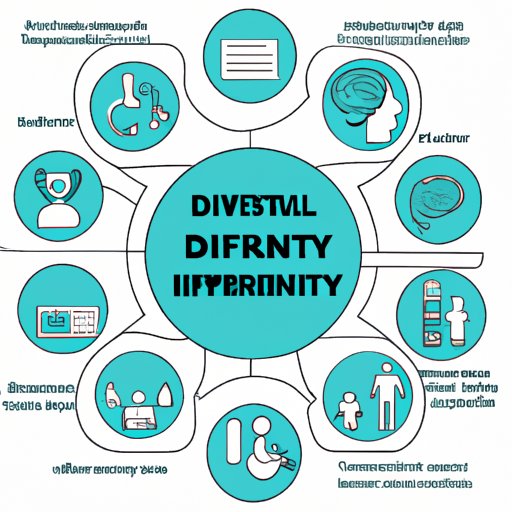
Introduction
Living with a mental health condition can be challenging, and it can often be difficult to navigate the world of disability benefits. However, it’s important to remember that help is available. In this guide, we’ll explore the steps involved in applying for disability benefits, as well as provide helpful tips and resources for those going through the process.
Step 1: Understanding the Criteria for Mental Health Disability
The first step in the process of applying for disability benefits for mental health is understanding what qualifies as a mental health disability. These conditions can include depression, anxiety disorders, bipolar disorder, schizophrenia, and others.
When applying for disability benefits, it’s important to note that the Social Security Administration (SSA) uses a set of criteria to determine whether or not an individual qualifies for benefits. This criteria includes proving that the individual has a medically determinable impairment (MDI) that is severe enough to impact their ability to work.
Step 2: Gathering Medical Evidence
One of the most important aspects of the application process is gathering relevant medical evidence. This evidence serves to support the diagnosis and severity of the individual’s mental health condition.
In order to obtain this evidence, it may be necessary to work with a variety of medical providers, including mental health professionals, general practitioners, and specialists. It’s also important to keep a detailed record of all medical appointments, diagnoses, treatments, and medications.
Step 3: Submitting the Disability Application
Once an individual has gathered all necessary medical evidence, the next step is to complete and submit an application for disability benefits. This can be done online, over the phone, or in person at a local Social Security office.
It’s important to note that in addition to the application itself, individuals will be required to submit supporting documents, such as medical records, work history, and more. Those applying for disability benefits for mental health conditions should be aware that there may be additional considerations unique to their situation, such as hospitalizations or therapy records.
In some cases, an application may be denied during the initial review process. If this happens, the individual has the option to appeal the decision.
Step 4: Collaborating with Care Providers and the Social Security Administration
Throughout the application process, it can be helpful to work with both care providers and representatives from the SSA. Care providers can offer valuable insight into the individual’s condition, as well as provide letters of support and other documentation.
The SSA will also be involved in reviewing the application and making a decision about whether or not the individual qualifies for disability benefits. It’s important to be patient and responsive during this process, as the decision can take several months to be made.
Step 5: Preparing for the Outcome of the Application
It’s important for individuals applying for disability benefits to prepare themselves for different possible outcomes. If approved, it’s crucial to understand the benefits of the program and how they may impact other government benefits or programs. If denied, it may be necessary to initiate the appeals process.
Regardless of the outcome, it’s important to continue working with care providers and seeking out additional resources and support.
Conclusion
While applying for disability benefits for a mental health condition can seem daunting, it’s important to remember that help is available. By understanding the criteria for mental health disability, gathering medical evidence, submitting a comprehensive application, collaborating with care providers and the SSA, and preparing for potential outcomes, individuals can navigate the application process with confidence.
If you’re struggling with a mental health condition and need additional support and resources, organizations like the National Alliance on Mental Illness (NAMI) and Mental Health America (MHA) are available to help.





